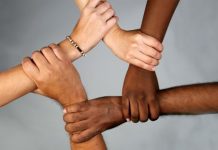This article is written by Shivali Srivastava from National Law University Odisha and has been edited by Abanti Bose, from Amity University Kolkata, India. This article throws light on the meaning of racial stereotyping and explains the famous IQ Controversy and its relation with races and genes.
Table of Contents
Introduction
Individuals experience different types of racial prejudices in their lifetime. Race discrimination in its most transparent form may occur as a consequence of stereotyping, prejudice and bias. Racial discrimination often exists in numerous places by indirect types of preferential treatment. Racial discrimination takes place due to when someone holds implicit racism, animosity, or ill feelings towards a racial and ethnic individual or community. Regrettably, people are mostly treated unequally, for instance by being denied a job or a rented house, simply because of an overt prejudice towards them based on race and reasons.
The concept of racial stereotypes
According to Cardwell, a stereotype is “a set, excessively-generalized perception in that person or group of people.” Additionally, because of stereotyping, people can experience racial discrimination. Stereotyping typically involves assigning the same characteristics to all members of a group, irrespective of the differences between them. Sometimes, it is focused on misunderstandings, incomplete knowledge and/or incorrect generalizations. Stereotypes, in most cases, take on negative characteristics of a group. The use of stereotypes is a significant way in which we ease our social environment; because they minimize the amount of thought that we have to do when we encounter a new person. By stereotyping we conclude that a person has quite a set of features and abilities that we believe all members of that community have. Stereotypes contribute to social classification, which is one of the causes of racist attitudes leading to in-groups and out-groups. Positive aspects of stereotypes include jurors (the term “sober as a judge” would imply that it’s a stereotype with a very honourable set of features), obese (often viewed as “jovial”) and television news anchors (usually viewed as highly dependable, honourable and unbiased). However, negative perceptions appear far more common.
Scientists have suggested that there are stereotypes of various races, cultures or ethnic communities. While the words race, community, and ethnic communities include different meanings, at the moment it is essentially taken as the same thing. According to a famous survey conducted by Katz and Braly in 1933 which was taken by the pupils of the University of Princeton exhibited that students had some evident stereotypes based on nationality and race. They were already preoccupied by a lot of negative and ill feelings about the perception of nationalities.
In the year 1933, the students mostly might have been white Americans and the existence of various other ethnic communities, and the images of other ethnic groups included Jews as shrewd and mercenary, Japanese as shrewd and sly, ‘negroes’ as lazy and happy-go-lucky, and Americans as industrious and intelligent. Not unexpectedly, racist attitudes often tend to support the holder’s ethnicity and to disparage other communities. It is likely reasonable to assume that each ethnic group does have other racial stereotypes. However, there is no evidence for this view, and many writers argue it is merely a way to justify racist attitudes and behaviours.
The different forms and instances of racial stereotyping
Forms of racial stereotyping
Subtle and subversive discrimination was also identified as one of the most common ways in which people who are racialized experience unequal treatment. Subtle forms of discrimination can often only be detected when all of the circumstances are examined. Also, juxtaposing how a racialized person has been treated with how others have been treated in a comparable situation or searching for behavior patterns will help determine whether subtle discrimination is at stake. Examples of subtle types of racial discrimination are numerous. In employment it may take the form of not hiring, training , mentoring or promoting a racialized person. Racialized people may be subject to unnecessary scrutiny of results, or may be more seriously punished for a common error.
Political and social movements in society to eradicate racism have dwindled overt displays of racism, known as explicit racism. Explicit racism includes any speech or action which demonstrates a conscious awareness of racist attitudes and beliefs. However, the enactment of civil rights act and socially constructed taboos against overt discrimination has helped in the past few decades to discourage direct public manifestations of discrimination towards minorities.
Recent instances of stereotyping
Michael Brown’s death in Ferguson on 9 August, 2014 reflected the racial disparities in the U.S. as well as the connection between bigotry, discrimination and systemic racism. On that day, a white police officer named Darren Wilson killed Brown, a young unarmed black man. Wilson instructed Brown and his friend to walk on the sidewalk instead of in the street during the incident. The killing primarily focused on the amount of tensions relating to race in the U.S. First, people of the black community mainly perceived Brown’s killing as the consequence of racially profiling a black man by a white police officer.
Creuza Oliveira started working as a domestic employee at the age of ten and later fought for the rights of employed black women who were exploited and later she had turned into a Brazilian politician. Her voice tells the story of over nine million Brazilian domestic workers, mainly women, mainly black, for whom slavery is not relegated to the piles of history’s dust. If she broke something, she was frequently labeled as incompetent, monkey, also “nigger,” Oliveira would be battered and insulted at work. The physical and psychological harassment in the household where she worked was exacerbated by sexual violence by the young men. Oliveira did not get paid to top it all off. She has been well informed that prejudice is about power structures, and that the majority of domestic workers have poor self-esteem. Independent expert on minority issues, Gay McDougall, who moderated the discussion, noted that safeguarding the civil labour rights of domestic servants was very challenging and that this was not a problem unique to Brazil.
Establishing the link between races and IQ
Conversations of race and human intellect, and also some popular beliefs of differences in intelligence because of genes owing to their races, have popped up in both sciences as well as in academic research of IQ testing in the beginning 20th century. As far as the concept of “race” is concerned, it is a social construct, and “intelligence” has no consensual definition or idea; the credibility of IQ tests as a standard for human intelligence is a conflicted topic in itself. In fact, there is no conclusive evidence that any alleged genetic variations between those groups can be attributed to the average Intelligence Quotient scores of different racial or ethnic population groups.
The first test results showing differences in IQ results among different U.S. ethnic groups were tests of U.S. Army cadets during World War I. In the early 20th century, eugenics lobbying groups insisted that these findings demonstrated that African-Americans and other classes of immigrants were of inferior intelligence to Anglo-Saxon white folks and that this was due to inherent biological differences; and they were using these views to validate segregation and discrimination policies. That being said, shortly other experiments showed up, trying to refute those findings and making an argument instead that the army test results had not managed appropriately external conditions such as socio-economic and educational inequality between blacks and whites. Further studies of anomalies such as the Flynn effect (substantial and long-sustained increase in both fluid and crystallized intelligence test scores that were measured in many parts of the world over the 20th century) have demonstrated the ways environmental variables influence the variations between-group IQs.
History of IQ controversy
To defend colonialism, slavery, sexism, social Darwinism, and ethnic eugenics, arguments of differences in intellect between races have been used. Informing their philosophies of white supremacy, racist theorists like Arthur de Gobineau relied extensively on the belief that the black groups were inherently subservient to white people. Even enlightenment theorists like slave owner Thomas Jefferson concluded that black groups were by virtue of their race lesser to white people in physical and intellectual terms.
Between the years of 1905 and 1908. Alfred Binet in the city of France had developed the very first pragmatic intelligence test for the positioning of children in school. Binet warned that his results of the tests should not be taken for granted to determine inherent intelligence or be used to perpetually label individuals. Binet’s evaluation was translated into English and a revised version was published by Lewis Terman (who invented Intelligence Quotient ratings for study results) in 1916, and published as Stanford–Binet Intelligence Scales.
Terman wrote in 1916 that Mexican-Americans, African-Americans, and indigenous Americans have a mental “dullness that seems to be racial, or at least intrinsic in the family stocks they come from.” The findings were widely promoted by a group of anti-immigration advocates, including the conservationist and science racism activist Madison Grant, who found the so-called Nordic race superior but endangered by “incompetent breeds” because of immigration. Discussions of the problem in the United States have inspired German Nazi arguments, particularly in Madison Grant’s writings, that the Nordic was a master race. The already imbibed hatred in Americans towards the Germans became the hot topic which eventually came to be considered problematic. Anthropologists including Franz Boas and Gene Weltfish had already executed much to prove that statements about racial intelligence hierarchies seem to be unscientific.
Criticisms
The definition of intelligence and the extent to which intelligence can be measured are subjects for argument. Neither there is agreement about how to describe intelligence; nor would it be universally accepted that this is something which can be evaluated meaningfully by one figure. Many psychometricians have claimed that test output relies crucially on information gained by previous exposure to the types of tasks found in such studies. This suggests that associations between people with vastly different outlooks and cognitive habits of test scores will not disclose their comparative intrinsic potentials. Moreover, in a recent statement by the American Association of Physical Anthropologists (2019) they stated that “Race does not offer an objective reflection of human biological diversity, it has never been accurate in the past, and it remains inaccurate when referring to contemporary human populations.
In the year 2012, a study was conducted that primarily analysed the various components of intelligence. It expressed disagreement with Jensen’s and Rushton’s view that genetic factors may play a role in IQ differences between groups, stating that whether population differences in intelligence test scores are influenced by heritable factors or by other associated demographic variables such as socioeconomic status, level of education and motivation still remains uncertain. This analysis was expressed by Hampshire et al.
Another study with respect to group differences, the study ‘Intelligence: Known and Unknown’ reaffirmed the consensus that discrepancies within groups are much larger than differences within groups, and that reports of ethnic discrepancies in intelligence should be carefully scrutinized because such statements had been used to justify racial discrimination.
Conclusion
In the end, numerous studies and experiments have been witnessed in this regard which shows that human intelligence and the intelligence quotient is dependent on a lot of factors. Evidence also assumes that social populations vary considerably from each other in terms of multiple physiological characteristics, at least to some extent for genetic reasons. However, this does not justify the persecution or enslavement of communities with relatively low means on those characteristics.
Consequently, if it was proven conclusively that genes lead to psychological differences between human populations, it would not immediately be acceptable to dominate or manipulate the populations that scored less on those psychological traits. What measures can be taken in the future to improve the consistency of the debate on unconventional subjects such as ethnicity, genes and intellectual ability? Most importantly, it should be reaffirmed that no normative findings result from any specific scientific discoveries and that it is a grave error to carry our personal beliefs hostage to the factual information. It is worth finishing with the thoughts of philosopher Singer, 2007, who pointed out in connection with the existing controversy that “in the face of big social problems, it is hard to justify a preference for ignorance over information.”
References
- https://www.un.org/en/letsfightracism/oliveira.shtml
- https://www.simplypsychology.org/katz-braly.html
- http://www.ohrc.on.ca/en/examples-racial-discrimination-fact-sheet
- https://secure.understandingprejudice.org/apa/english/page12.htm
- https://www.apa.org/monitor/2017/10/stereotyping
- https://courses.lumenlearning.com/sociology/chapter/stereotypes-prejudice-and-discrimination/
- https://en.wikipedia.org/wiki/Race_and_intelligence
- https://en.wikipedia.org/wiki/Race_and_intelligence#Criticisms_of_race_and_intelligence_as_biologically_defined_concepts
- https://link.springer.com/article/10.1007/s40806-018-0152-x#Sec5
- https://www.apa.org/science/about/psa/2006/04/maddox
LawSikho has created a telegram group for exchanging legal knowledge, referrals and various opportunities. You can click on this link and join:
 Serato DJ Crack 2025Serato DJ PRO Crack
Serato DJ Crack 2025Serato DJ PRO Crack











 Allow notifications
Allow notifications



